
You live in a world of constant noise. From the moment you wake up, your phone buzzes with notifications, your commute is a sea of advertisements, and your workday is a marathon of decisions. By the time you get home, the idea of sitting down to meticulously track expenses, build a budget, or research investment options feels less like a responsible step and more like a punishment. Your willpower, a finite and precious resource, has been completely drained.
If this sounds familiar, you are not alone. So many of us have tried to muscle our way to better financial health. We download a complex budgeting app on a motivated Sunday night, use it religiously for three days, and then abandon it by Thursday when life gets complicated. We swear off impulse purchases, only to find ourselves clicking “add to cart” after a stressful meeting. We tell ourselves, “This time will be different,” but the cycle of ambition, overwhelm, and guilt repeats.
The problem isn’t your character or your desire for a better life. The problem is the approach. Relying on sheer willpower to build new money habits is like trying to build a house in a hurricane. The environment of modern urban life is practically designed to erode your focus and deplete your resolve. So, what is the alternative?
The answer is not a bigger, more audacious goal. It is not a more restrictive budget or a more complicated spreadsheet. The answer is smaller. It is quieter. It is a single, almost laughably simple habit that, when practiced with consistency, acts as the foundation for every other positive financial action you will ever take. It is the keystone that holds the entire arch of your financial well-being in place.
This article will not ask you to change everything overnight. Instead, it will guide you, gently and specifically, through the process of building one foundational habit. We will explore the science of how habits form, how to design a routine that fits into your actual life (not your fantasy life), and how to stay on track without shame or burnout. This is not a quick fix; it is the beginning of a durable, lifelong transformation. Forget willpower. It’s time to embrace a system built for real people living in the real world.
📚 Table of Contents
- Understanding the Engine of Lasting Change
- The Architect’s Guide to Your New Money Habit
- 1. Define Your Minimum Viable Action (MVA)
- 2. Conduct a Friction Audit
- 3. Anchor It with Environment Cues and Habit Stacking
- 4. Establish Gentle Accountability
- How to Be Resilient When Life Intervenes
- Putting It All Together: Two Sample Routines
- Your Questions Answered: Navigating the Journey
- How long does it really take for a habit to become automatic?
- What should I do on days when I’m traveling or my routine is completely disrupted?
- I’ve been consistent for a while, but I feel like I’ve hit a plateau. What’s next?
- Can I try to build other habits, like for health or productivity, at the same time?
- Your First 30 Days of Financial Clarity

Understanding the Engine of Lasting Change
Before we can build our transformative habit, we must first understand the machinery we’re working with: the human brain. Our brains are efficiency machines, constantly looking for ways to automate recurring tasks to save energy. This automation process is what we call a habit. To build good financial habits, we need to speak the brain’s language. This involves two core concepts: the Habit Loop and Identity-Based Habits.
First, let’s define the Habit Loop. Popularized by author Charles Duhigg and based on decades of research in neuroscience, the habit loop is a simple three-step neurological pattern that governs any habit. Understanding it is like being handed the instruction manual for your own behavior.
The first step is the Cue. This is the trigger that tells your brain to go into automatic mode and which habit to use. A cue can be a time of day (morning coffee), a location (your office desk), an emotional state (feeling stressed), or the action that immediately precedes it (finishing dinner).
The second step is the Action or Routine. This is the behavior itself—the thing you think of as the habit. It can be physical (opening your banking app), mental (recalling your savings goal), or emotional (taking a deep breath instead of making an impulse purchase).
The third and most crucial step is the Reward. This is what tells your brain that this particular loop is worth remembering for the future. The reward isn’t always obvious or tangible. It can be the feeling of relief, a sense of clarity, a moment of pride, or the simple satisfaction of ticking a box. This positive reinforcement is what makes you want to repeat the action the next time the cue appears.
Think about a common, less-than-ideal money habit: stress-shopping online. The Cue is the feeling of stress after a long day. The Action is opening a shopping app and browsing. The Reward is the temporary distraction and the little dopamine hit of finding something you like or making a purchase. To build better money habits for success, we must consciously design a new loop with a healthier action and a more meaningful reward.
This brings us to the second, more profound concept: Identity-Based Habits. Most of us approach change by focusing on the outcome we want (e.g., “I want to save $10,000”). This is outcome-based thinking. A more powerful method, championed by author James Clear, is to focus on the person we want to become. This is identity-based thinking.
Instead of saying, “I want to stop wasting money,” you frame the goal as, “I am a person who is intentional with my resources.” Instead of, “I need to build a budget,” it becomes, “I am the kind of person who has a clear plan for my money.” This shift is subtle but transformative. Every time you perform your tiny new habit, you are not just performing a task; you are casting a vote for that new identity. You are providing yourself with evidence that you are that person.
This approach bypasses the need for motivation because your actions become an expression of who you are, not a chore you have to do. The goal is not to achieve a perfect budget; the goal is to become a mindful spender. The small wins aren’t just checkmarks on a to-do list; they are affirmations of your evolving identity. For those interested in the psychological underpinnings of behavior, organizations like the American Psychological Association offer extensive resources on the science of human behavior and change.
By combining our understanding of the Habit Loop (the “how”) with the power of Identity-Based Habits (the “why”), we create a robust framework for change. We can design a cue-action-reward loop that is not only effective but also deeply meaningful, reinforcing the kind of person we aspire to be with every small, consistent step.

The Architect’s Guide to Your New Money Habit
Now that we understand the principles, it’s time to become the architect of your financial future. We will design our one transformative habit: a brief, consistent financial check-in. This is not about budgeting or making big decisions. It is purely about building the muscle of awareness. This single habit becomes the gateway to all other positive financial habits to build. Our design process has four key stages: defining the minimum viable action, conducting a friction audit, anchoring it with environmental cues, and establishing gentle accountability.

1. Define Your Minimum Viable Action (MVA)
The single biggest mistake people make is starting too big. We need to define the smallest possible version of the habit that still counts. This is your Minimum Viable Action. It should be so easy that you cannot say no to it, even on your worst day. The goal for the first few weeks is not progress; it is consistency. Consistency builds the neural pathway.
What is the one habit we’re building? A Two-Minute Money Moment. Here are some examples of what that could look like. Choose only one.
Example MVA 1: Open your primary banking app and look at your balance and the last transaction. That’s it. Close the app. The action takes 30 seconds.
Example MVA 2: Open your credit card app and mentally note the current balance. No judgment, just observation. The action takes 20 seconds.
Example MVA 3: Look at a sticky note on your monitor that has your main financial goal written on it (e.g., “Debt-Free by 2025”). Read it. The action takes 10 seconds.
The key is to make the action binary—you either did it or you didn’t. There is no room for failure. You are not analyzing, calculating, or fixing anything. You are simply looking. You are building the identity of “a person who is aware of their finances.”
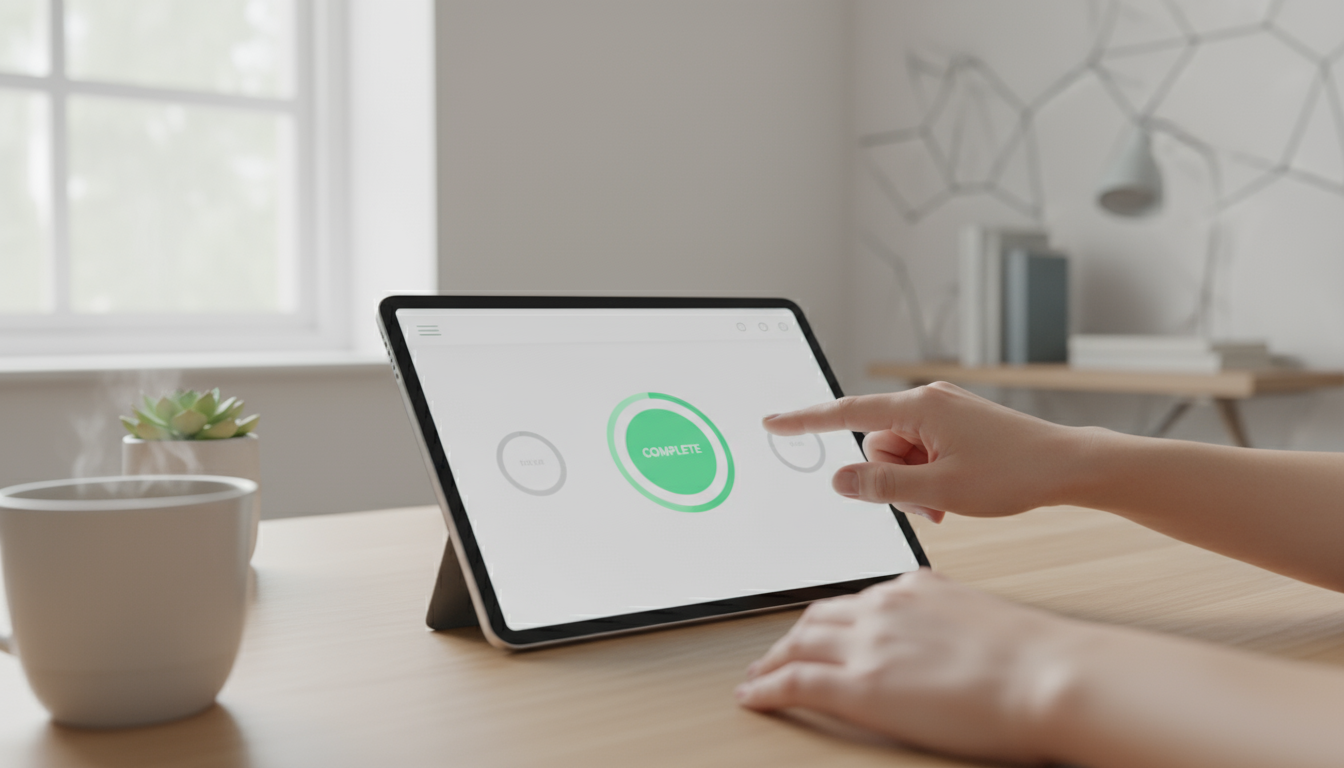
2. Conduct a Friction Audit
Friction is anything that stands between you and doing your desired action. Our job is to systematically identify and eliminate it. Think like a user experience designer for your own life. How can you make performing your MVA utterly seamless?
Let’s say your MVA is to open your banking app. What is the friction? Maybe the app is buried in a folder on the third page of your phone’s screen. Solution: Move it to your home screen dock. Maybe you have to type a long password every time. Solution: Enable facial or fingerprint recognition. Maybe your phone is in another room when you plan to do it. Solution: Change the time you do it to a moment when the phone is already in your hand.
Spend five minutes brainstorming every tiny obstacle. Is the lighting bad? Do you need your glasses? Does the app take too long to load on Wi-Fi? Be ruthless. The goal is to make doing the habit easier than not doing it.

3. Anchor It with Environment Cues and Habit Stacking
We need a reliable cue to trigger the action. The most effective way to do this is through Habit Stacking, a concept where you chain your new habit to an existing, firmly established one. The formula is simple: “After I [CURRENT HABIT], I will [NEW HABIT].”
Your current habits are the tracks that are already laid. You’re just adding a new train car. Look at your daily routine for solid anchor points.
Morning examples:
“After my first sip of coffee, I will open my banking app for 30 seconds.”
“After I turn off my morning alarm, I will look at my financial goal sticky note.”
Evening examples:
“After I brush my teeth, I will open my credit card app for 30 seconds.”
“After I put my phone on the charger for the night, I will glance at my checking account balance.”
Choose one cue and stick with it. The physical environment itself becomes your trigger. The coffee maker, the toothbrush, the phone charger—these objects become part of the cue that initiates your new, positive financial habit.
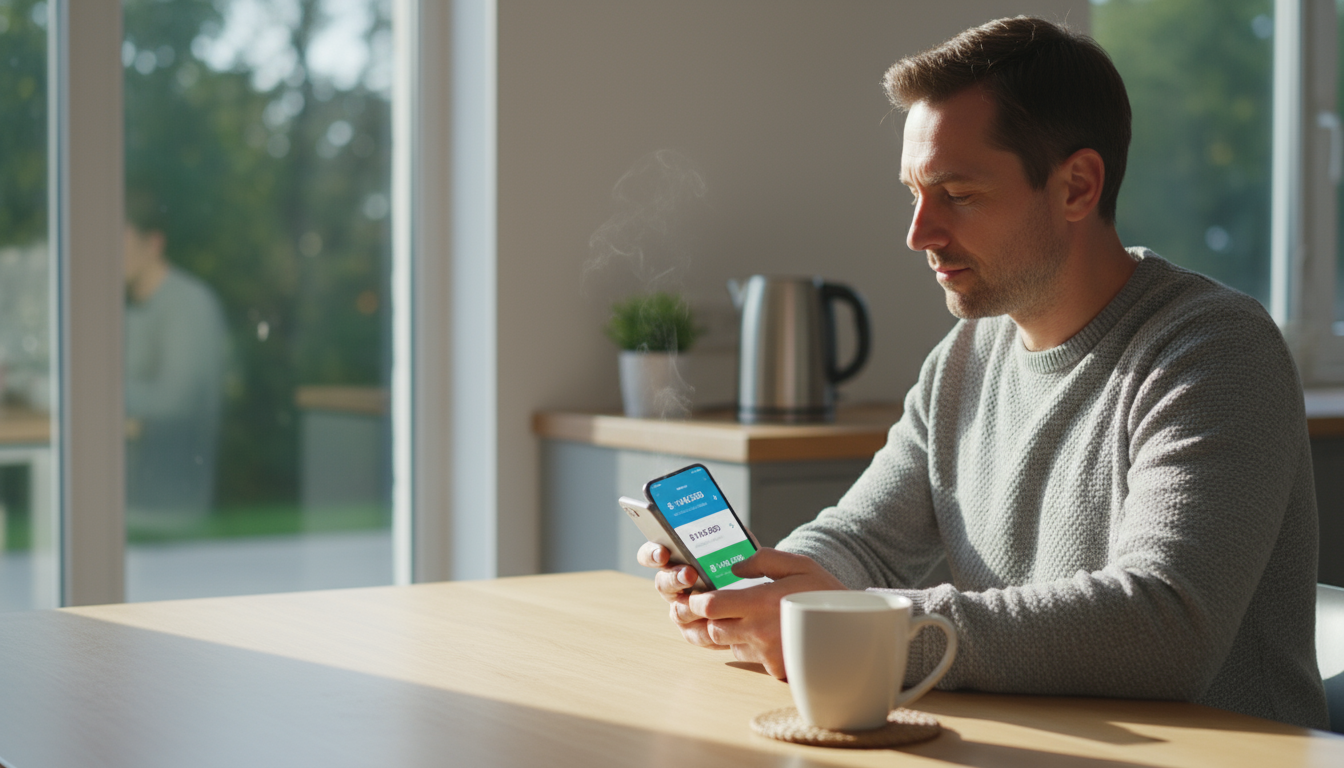
4. Establish Gentle Accountability
Accountability doesn’t have to mean pressure or shame. It’s simply a mechanism to bring awareness to your consistency. The best accountability partner, at first, is yourself. A visual tracker is incredibly effective.
Get a simple wall calendar or a blank piece of paper. Every day you perform your Two-Minute Money Moment, draw a big ‘X’ over the date. The goal is not to create an unbroken chain (though that can be motivating). The goal is to create a visual record of your effort. Seeing a growing string of X’s provides a powerful reward—a feeling of accomplishment and proof of your new identity. It makes you want to keep the momentum going. It turns an invisible internal process into a tangible, visible reality.

How to Be Resilient When Life Intervenes
Perfection is a myth. You will have days where you’re sick, traveling, or overwhelmed. You will miss a day. The most critical part of building durable money habits is not about achieving a perfect streak; it’s about how you respond to the inevitable imperfections. A rigid, all-or-nothing mindset is brittle and shatters under pressure. A flexible, resilient mindset bends and endures. Here’s how to build a system that anticipates and gracefully handles setbacks.
Plan for Relapse Before It Happens
Just as buildings in earthquake zones are built with flexibility in mind, your habit system should have a built-in plan for disruption. This is your relapse plan. It’s a simple “if-then” statement you create ahead of time, when you’re feeling calm and rational. This removes the need for in-the-moment decision-making when you’re feeling tired or guilty.
Your plan could be: “If I miss one day of my Two-Minute Money Moment, then the very next day, I will do a 30-second version of it, no matter what.” Or, “If I am traveling and out of my routine, my goal is to simply open the app for five seconds while waiting in line for coffee, just to touch the habit.”
The purpose of this plan is not to perfectly perform the habit, but to maintain the connection to it. It keeps the neural pathway from fading. By having a pre-defined, compassionate response to a missed day, you prevent one slip-up from spiraling into a complete abandonment of the habit. You are planning to be human.

Understand the Psychology of Streaks
Visual trackers, like putting an ‘X’ on a calendar, leverage streak psychology. Seeing an unbroken chain of successes can be a powerful motivator. It creates momentum and provides a tangible reward for your consistency. However, this tool can also be a double-edged sword. For perfectionists, the fear of “breaking the chain” can create so much pressure that it becomes counterproductive. And when the streak inevitably breaks, the feeling of failure can be so demoralizing that they give up entirely.
The key is to use streaks as a tool, not a master. Reframe the goal. The objective is not to build a perfect, infinite streak. The objective is to build a successful long-term average. To do this, adopt one simple rule: Never Miss Twice.
Missing one day is an accident. It’s life. Missing two days in a row is the start of a new, undesirable habit. This rule provides a clear, non-judgmental directive. It allows for the reality of off-days while immediately getting you back on track. It transforms a moment of failure into an immediate opportunity for recommitment. This approach to building successful finance habits is supported by research into behavior change, a field often informed by studies from institutions like the National Institutes of Health.
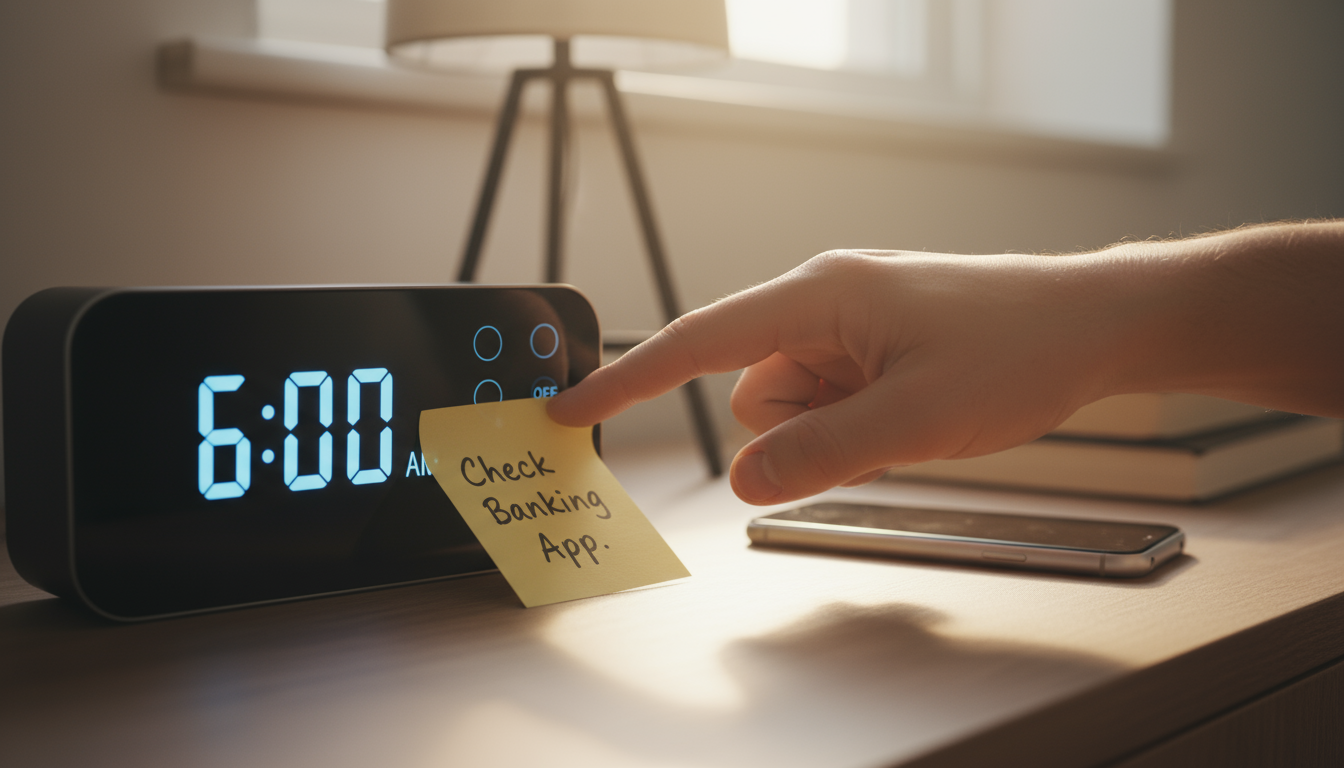
Reset Without Shame
The most corrosive force in habit formation is shame. When you miss a day and that inner voice starts saying, “See, you can’t stick with anything,” it’s easy to believe it. Shame drains your energy and makes it harder to start again. The antidote is to treat a missed day not as a moral failing, but as a data point.
Instead of self-criticism, practice self-compassion and curiosity. Ask yourself: “What made it difficult to do my habit yesterday?”
Was the cue not strong enough? Perhaps I need a louder alarm or a more obvious visual reminder.
Was there too much friction? Maybe the app logged me out and I didn’t want to find the password.
Was I simply too exhausted? Maybe my MVA needs to be even smaller for a few days.
This transforms guilt into a productive feedback loop. You are not a failure; you are a scientist running an experiment. The experiment just produced some interesting data that you can use to refine your system. Every “failure” is an opportunity to make your habit design more robust, more resilient, and a better fit for your real life. By embracing this mindset, you can always reset your journey with wisdom and kindness, which is the true secret to long-term success.

Putting It All Together: Two Sample Routines
Theory is valuable, but seeing how these principles work in the context of a real day can make them click. Let’s walk through two short, narrative examples of how our Two-Minute Money Moment can be seamlessly integrated into daily life. Notice how the actions are tiny, the cues are anchored to existing routines, and the focus is on awareness, not complex analysis. These are the kinds of money habits that stick because they fit into the life you already have.

Worked Example 1: The Evening Wind-Down Routine
It’s 10:15 PM. Maria is getting ready for bed. Her day was a whirlwind of meetings, errands, and making dinner for her family. Her mind is still buzzing. She follows her usual wind-down routine: she washes her face, changes into her pajamas, and brushes her teeth. As she places her toothbrush back in its holder—her pre-decided cue—she picks up her phone to set her alarm for the next morning. Her thumb hovers for a second over her social media apps, a common temptation. But she’s already made a decision.
Her banking app is on her phone’s main dock, right next to the clock. She taps it. It opens instantly using her fingerprint. The screen shows her main checking account balance. She glances at the most recent transactions from the day: a charge from the grocery store, her commuter pass auto-reloading, and a payment from a client. She doesn’t judge the numbers or open a spreadsheet. She simply observes. She is connecting with her financial reality for a brief moment. She closes the app. The entire process has taken less than 45 seconds. As she puts her phone on the nightstand to charge, she feels a tiny, quiet sense of control. It’s not a dramatic shift, but it’s a peaceful, grounding end to the day. She has cast another vote for her identity as “someone who is mindful of her finances.”

Worked Example 2: The Morning Focus Primer
David’s alarm goes off at 6:30 AM. His first instinct, like many people, is to grab his phone and check email, immediately flooding his brain with the demands of others. But he’s been working on a new routine. He gets out of bed, goes to the kitchen, and starts his electric kettle for his morning tea. The sound of the water starting to boil is his cue.
While the water heats, he sits at the kitchen table with his phone. He doesn’t open email or news. Instead, he opens a simple personal finance dashboard app he likes. The app shows him a few key numbers on one screen: his total savings balance, his retirement account value, and a small progress bar toward his goal of saving for a down payment. He doesn’t click on anything or analyze the market’s daily fluctuations. He just looks at the numbers for two minutes while the tea steeps. This ritual serves as a primer for his day. It connects the work he is about to do with the long-term goals that give it meaning. It’s a moment of perspective before the chaos begins. When his tea is ready, he closes the app and starts his day, not with a sense of frantic reactivity, but with a quiet, underlying sense of purpose.

Your Questions Answered: Navigating the Journey
As you begin to build your new financial habit, questions and challenges will naturally arise. This is a normal part of the process. Here are answers to some of the most common questions people have when they start this journey. The goal is to provide clarity and reassurance, helping you navigate the path with confidence.

How long does it really take for a habit to become automatic?
You have probably heard the popular myth that it takes 21 days to form a new habit. The truth is more complex and, frankly, more liberating. That number comes from a misinterpretation of a small study from the 1960s. More recent research, such as a well-known study from University College London, found that it took anywhere from 18 to 254 days for a new habit to feel automatic. The average was 66 days. The takeaway is this: there is no magic number. It depends on the person, the complexity of the habit, and the consistency of the practice. Instead of focusing on a finish line like “21 days,” focus on the process. Concentrate on showing up today. Celebrate the small win of performing your Two-Minute Money Moment right now. Automaticity will come as a byproduct of consistency, not as a reward for hitting a specific number of days.
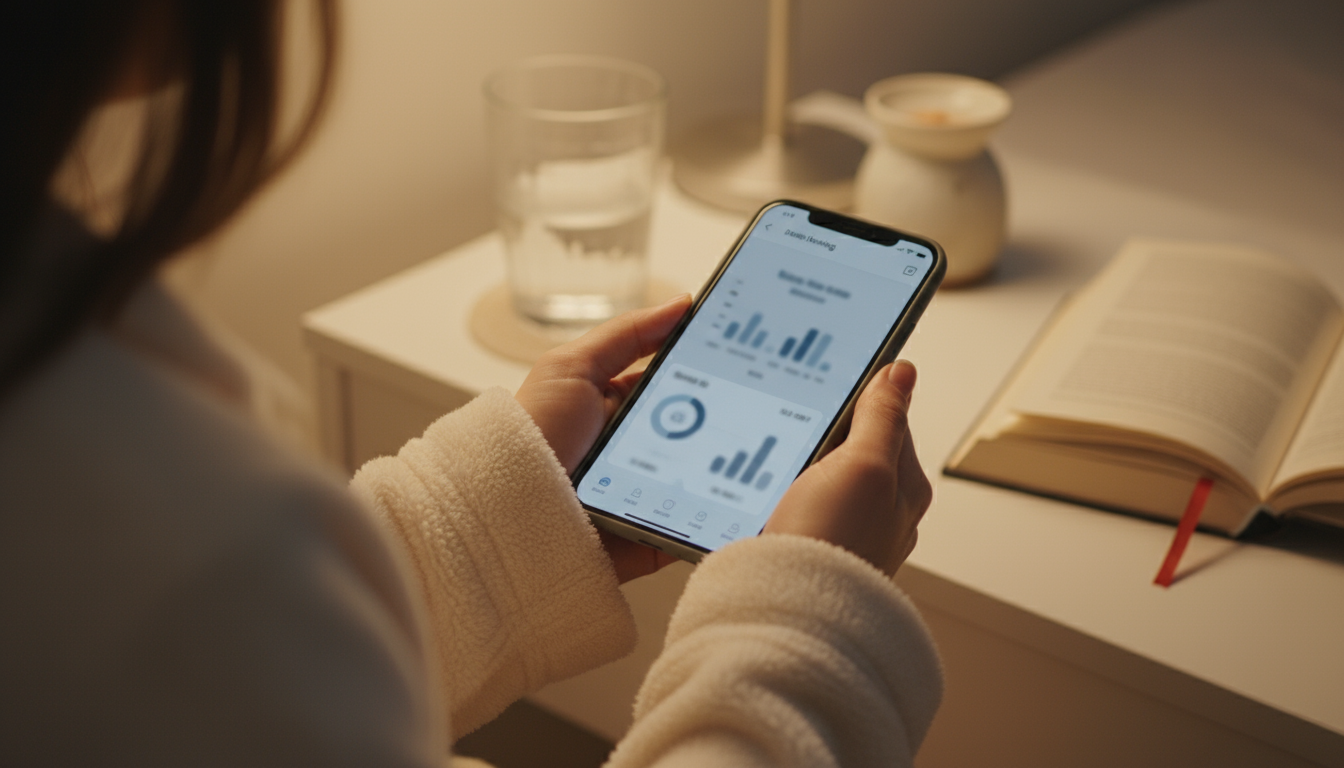
What should I do on days when I’m traveling or my routine is completely disrupted?
This is where your Minimum Viable Action and your relapse plan are essential. The goal on a chaotic day is not to perform the habit perfectly, but to maintain the thread of consistency. If your usual cue is “after I brush my teeth at home,” that won’t work in a hotel. So, you adapt. Your MVA might be to simply open your banking app for 10 seconds while you wait for the elevator, or to look at your balance while you’re in the back of a taxi. The action itself is less important than the act of remembering and honoring your commitment in a tiny way. This reinforces the identity of “I am a person who stays aware of my finances, even when life is busy.” It proves to yourself that the habit is adaptable and not dependent on a perfect environment.
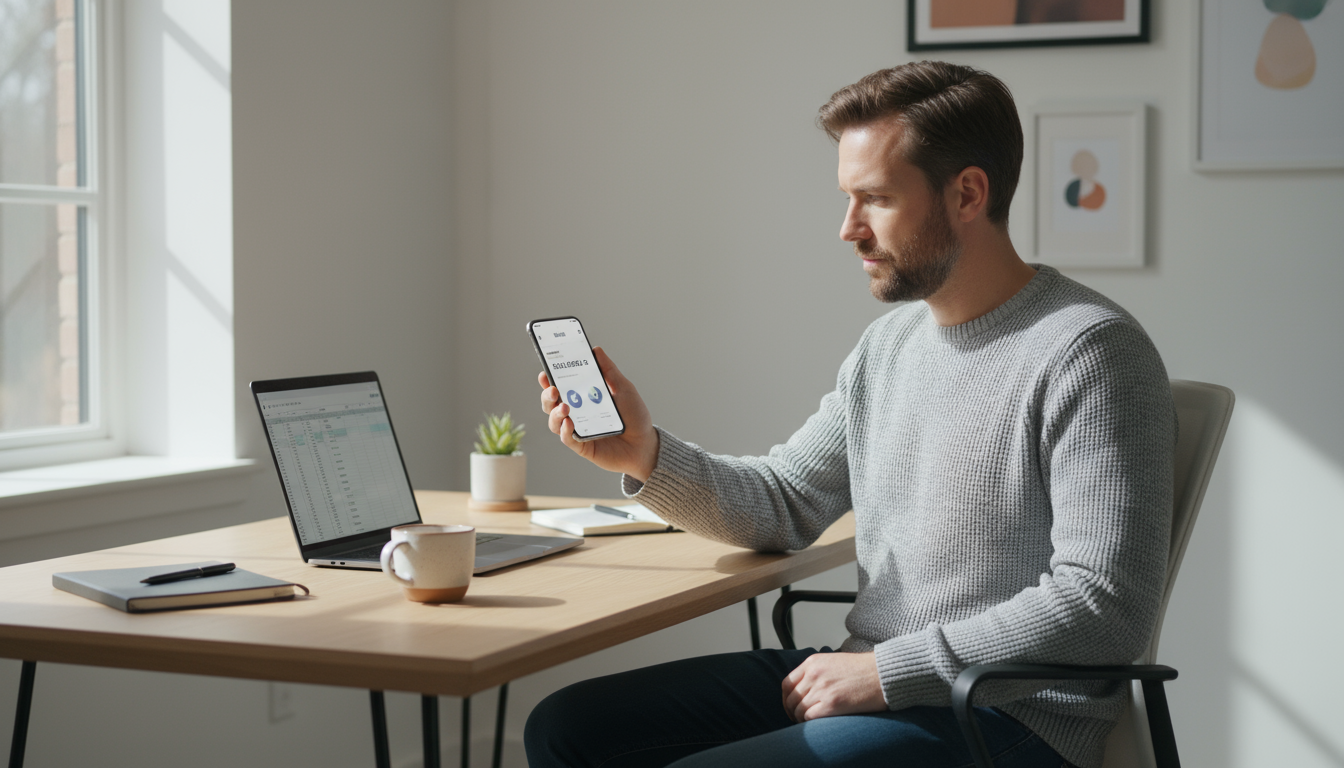
I’ve been consistent for a while, but I feel like I’ve hit a plateau. What’s next?
A plateau is often a sign of success! It means the initial habit is becoming easier and more automatic, requiring less conscious effort. This is the perfect time to consider “leveling up,” but only if you feel ready. The key is to make the next step just as small and manageable as the first one. If your MVA was just to look at your bank balance, your “level two” habit might be to look at the balance and mentally categorize one transaction. For example, “Okay, that $5 charge was for coffee.” That’s it. You are adding a tiny layer of engagement without adding significant friction. Over time, you can slowly scale the habit: categorize three transactions, jot down one spending insight in a notes app, or check your savings account balance in addition to your checking. Always return to the core principle: keep it so easy you can’t say no.

Can I try to build other habits, like for health or productivity, at the same time?
While it’s tempting to overhaul your entire life at once when you’re feeling motivated, it’s generally more effective to focus your conscious effort on building one new keystone habit at a time. Your self-control and decision-making energy are finite. By channeling that energy into establishing one foundational habit—like your Two-Minute Money Moment—you build momentum and self-efficacy. Once that habit is established and feels more automatic (after a couple of months of consistency), you can then turn your focus to architecting a new habit in another area of your life. The good news is that positive habits often create a positive ripple effect. The sense of control and mindfulness you cultivate with your financial habits can naturally spill over, making you more intentional in other areas like your health or work.

Your First 30 Days of Financial Clarity
We’ve covered the why and the how. We’ve explored the science of habits, the art of designing them, and the wisdom of navigating setbacks. Now, the journey moves from the page into your life. The goal is not to become a different person overnight. The goal is to become just one percent better, one day at a time. That tiny, consistent effort is the most powerful engine for transformation there is.
The single habit that will transform your financial life is not about wealth accumulation or complex investment strategies. It is the simple, quiet habit of awareness. A brief, daily moment of connection with your financial reality, free from judgment and overwhelm. This is the seed from which all other money habits for success will grow. By showing up for just a minute or two each day, you are not just looking at numbers; you are rewriting your identity. You are becoming a person who is calm, conscious, and in control of their financial destiny.
Here are your next actions. Do not try to do them all at once. Pick one, and then the next, over the coming week. The journey starts not with a leap, but with a single, intentional step.
1. Choose Your Minimum Viable Action. Right now, decide on the absolute simplest version of your financial check-in. Will you look at your bank balance? Your credit card statement? Your savings goal? Write it down on a piece of paper. It should take less than two minutes to complete.
2. Choose Your Habit Stack. Look at your existing daily routine. What is a solid, reliable habit you already do without thinking? Brushing your teeth? Making coffee? Turning off your alarm? Decide what your new habit will immediately follow. The formula is: “After [current habit], I will [my new MVA].”
3. Do a Five-Minute Friction Audit. Think about the action you just chose. What could possibly get in the way? Move the app to your home screen. Enable biometric login. Put a sticky note reminder on your coffee machine. Make it ridiculously easy to succeed.
4. Start Today. Do not wait for Monday. Do not wait for the first of the month. Your first opportunity to practice is your very next cue. Perform your tiny action, and then give yourself a moment to feel the reward—the quiet satisfaction of having honored a commitment to yourself. That feeling is the fuel for tomorrow.
Disclaimer: The information provided in this article is for educational and informational purposes only and is not intended as financial, medical, or psychological advice. TheFocusedMethod.com is not a financial advisory service. Please consult with a qualified professional for advice tailored to your individual situation.






